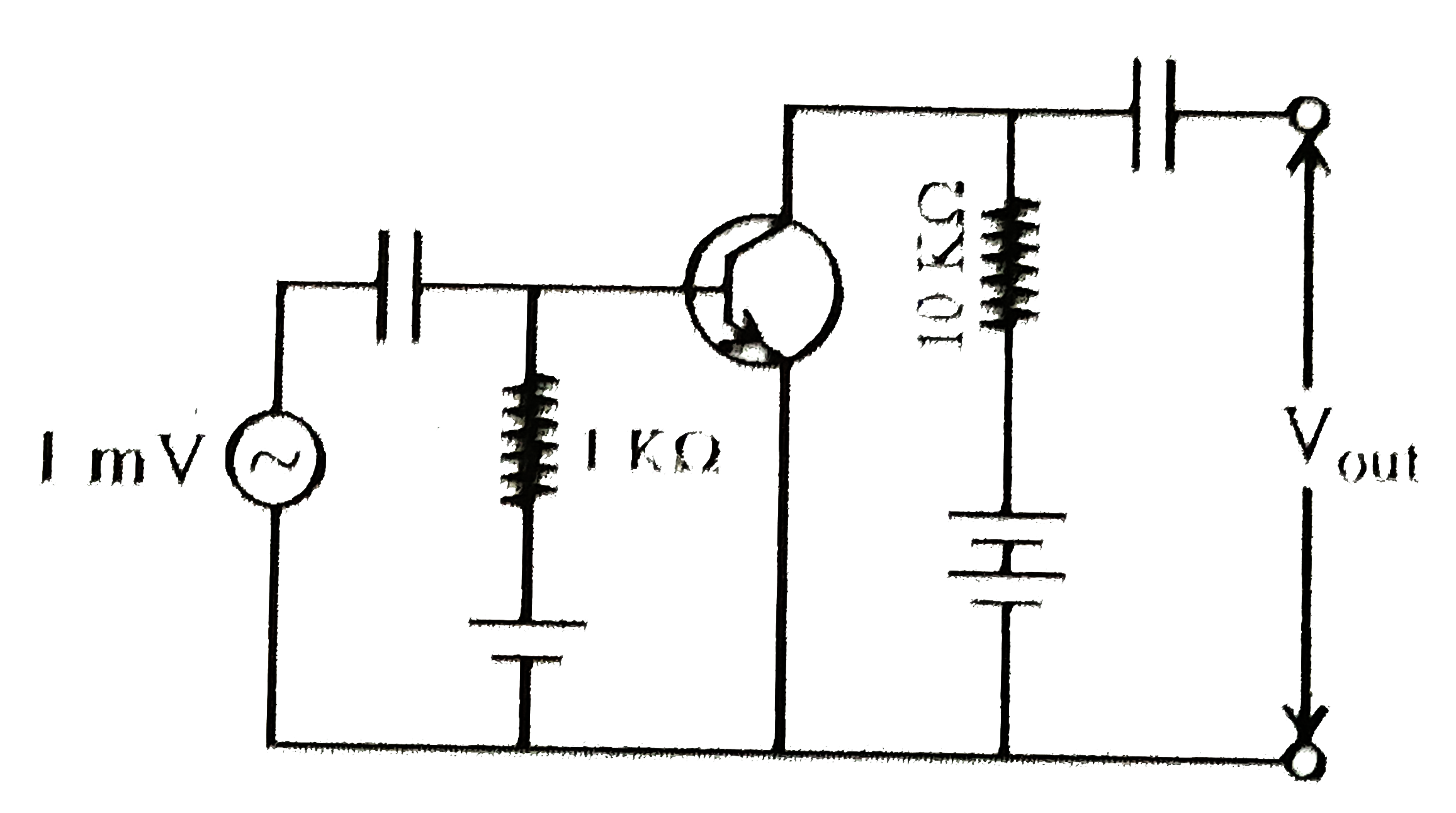In a common-emitter amplifier circuit using an n-p-n transistor the phase differene between the input and the output voltages will be Solution in Bengali
45∘
90∘
135∘
180∘
The correct Answer is:D
In a common -emitter amplifier circuit the phase difference between the input and the output voltage is 180∘ (out of phase ).
Topper's Solved these Questions
- BOOK - CHHAYA PUBLICATIONCHAPTER - SEMICONDUCTORS AND ELECTRONICS EXERCISE - EXAMINATION ARCHIVE with solutions (AIPMT)2videos
SEMICONDUCTORS AND ELECTRONICS
- BOOK - CHHAYA PUBLICATIONCHAPTER - SEMICONDUCTORS AND ELECTRONICS EXERCISE - EXAMINATION ARCHIVE with solutions (NEET)6videos
SEMICONDUCTORS AND ELECTRONICS
- BOOK - CHHAYA PUBLICATIONCHAPTER - SEMICONDUCTORS AND ELECTRONICS EXERCISE - EXAMINATION ARCHIVE with solutions (WBJEE)8videos
SEMICONDUCTORS AND ELECTRONICS
- BOOK - CHHAYA PUBLICATIONCHAPTER - REFRACTION OF LIGHTEXERCISE - CBSE SCANNER11videos
REFRACTION OF LIGHT
Similar Questions
The barrier potential of a p-n junction depends on (i) type of semiconductor material (ii) amount of doping and (iii) temperatur e. Which one of the following is correct?
04:12View SolutionConsider the junction diode as ideal. The value of current flowing through AB is
 03:55View Solution
03:55View SolutionIn a transistor output characteristic commonly used in common-emitter configuration the base current IB the collector current IC and the collector -emitter voltage VCE have values of the following orders of the magnitude in the active region
09:51View SolutionFor the same angle of incidence, the angles of refraction in three different media A, B and C are15∘,25∘ and 35∘ respectively. In which medium, will the velocity of light be minimum ?
11:24View SolutionIn common emitter transistor amplifier circuit, the input signal voltage and the output collector voltage are ..............phase.
01:37View SolutionDraw a labelled circuit diagram for a common emitter amplifier using n-p-n transistor. Write down the expression for its voltage gain. What is the phase difference between input and output signals?
00:59View SolutionWith the help of a labelled circuit diagram, explain how an n-p-n transistor can be used as an amplifier in common-emitter configuration. Explain how the input and output voltages are out of phase by 1800 for a common-emitter transistor amplifier.
05:05View SolutionDraw the circuit diagram of a common emitter amplifier using n-p-n transistor. What is the phase difference between the input signal and output voltage? State two reasons why a common emitter amplifier is preferred to a common base amplifier.
02:07View SolutionIn the following common emitter configuration, and n-p-n transistor with current gain beta=100 is used. The output voltage of the amplifier will be
09:00View SolutionIn a common emitter amplifier circuit using an n-p-n transistor, the phase difference between the input and the output voltages will be:-
04:21View Solutionn - p - n ट्रांजिस्टर से बनाये हुए एक उभयनिष्ठ-उत्सर्जक प्रवर्धक परिपथ में निवेशित तथा निर्गत विभवों के बीच कलान्तर का मान होगा :
02:14View SolutionIn the following common emitter configuration an n-p-n transistor with current gain β = 100 is used. The output voltage of the amplifier will be
 01:12View Solution
01:12View SolutionDraw a circuit diagram of a CE amplifier by using n-p-n transistor and show input and output voltages graphically.
00:24View Solutionट्रान्जिस्टर के उभयनिष्ठ उत्सर्जक प्रवर्धक परिपथ के लिए निवेशी एवं निर्गत सिग्नल के मध्य कलान्तर होता है :
00:59View SolutionIn the following common emitter configuration an n-p-n transistor with current gain alpha = 100 is used . The output voltage of the amplifier will be :
02:24View Solution

